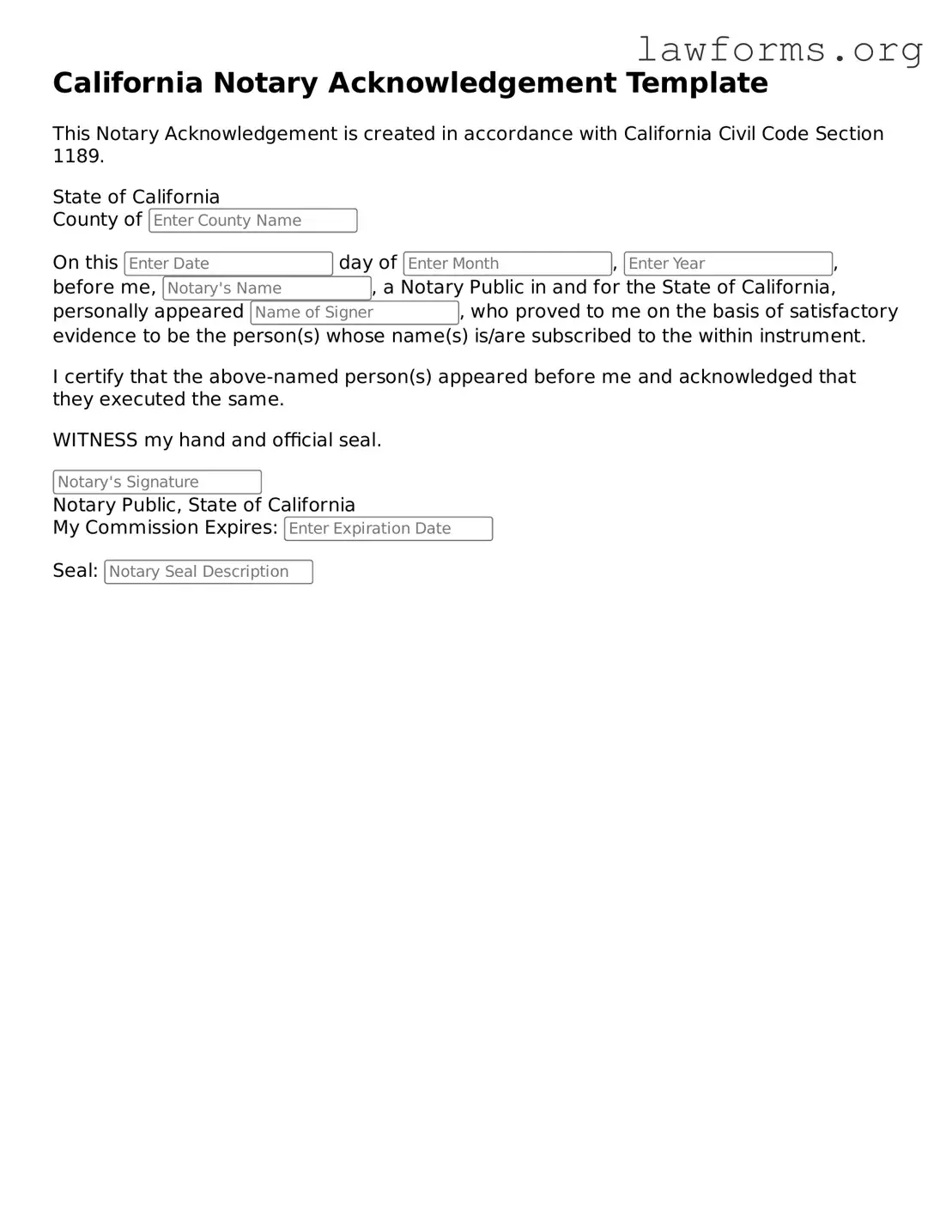Attorney-Approved Notary Acknowledgement Template for the State of California
The California Notary Acknowledgment form is a legal document that verifies the identity of individuals signing a document. This form ensures that signatures are genuine and that signers understand the contents of the document they are signing. To simplify your process, fill out the form by clicking the button below.
Customize Document Online
